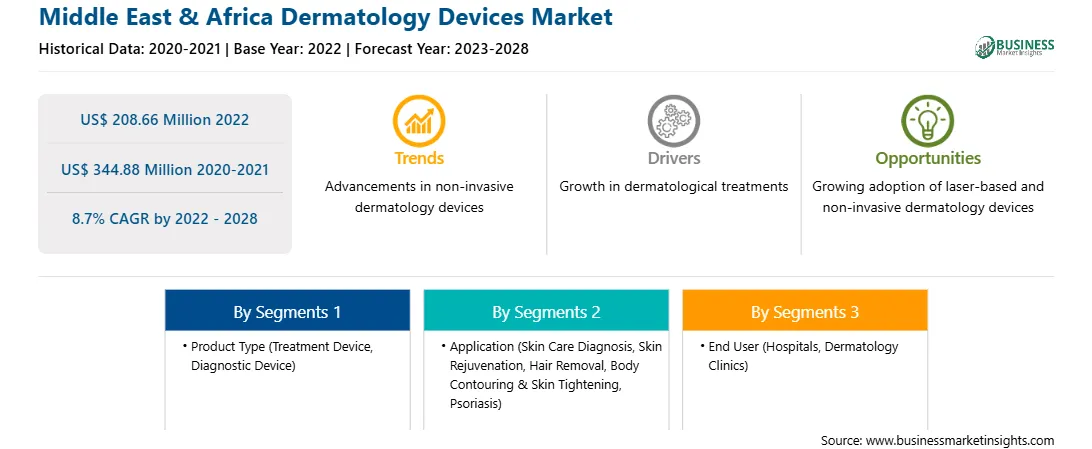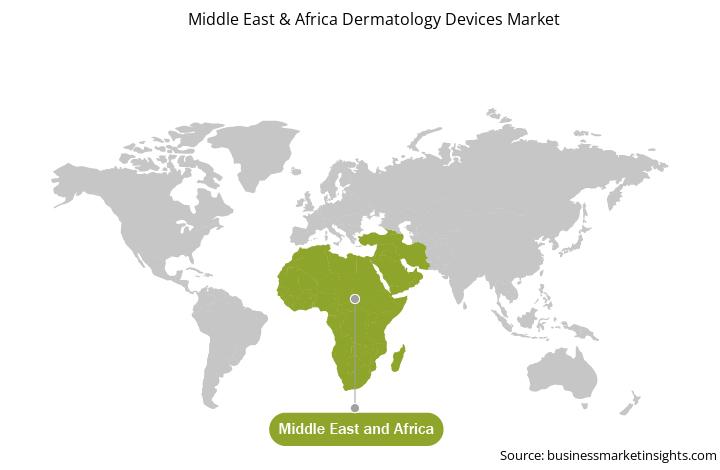Skin irregularities caused due to unprotected exposure to ultraviolet (UV) rays, skin disorders, aging, and hereditary issues can consist of textural irregularities, such as wrinkles and acne scars, and pigmentation changes, including freckles, sunspots, and visible blood vessels. Additionally, irregularities may cause the loss of tone and healthy glow in younger skin. Also, the skin feels less firm. To overcome skin irregularities and treat several aspects of skin damage, different treatment modalities are available in the market. A few treatment modalities include laser treatment for skin resurfacing, mechanical resurfacing, chemical peels, and injectable products that can improve the appearance of fine lines and wrinkles of the entire face or those developing in a specific area of the face, such as upper lip and around the eyes. Moreover, advanced treatment modalities can also be used to treat pigmentation disorders, such as sun and age spots and acne scars. For example, laser resurfacing is a facial rejuvenation procedure that allows lasers to improve the skin's appearance or treat minor facial flaws. The procedure comprises two types—ablative lasers and nonablative laser or light source. Ablative laser removes the thin outer layer of skin (epidermis) and heats the underlying skin (dermis), stimulating collagen growth. Types of ablative therapy involve a CO2 laser, an erbium laser, and combination systems. Additionally, a nonablative laser is a less aggressive technique than an ablative laser and requires a shorter recovery time. Therefore, skin rejuvenation and resurfacing are expected to fuel the growth of the Middle East & Africa dermatology devices market during the forecast period.
Middle East & Africa Dermatology Devices Market Overview
Saudi Arabia is expected to be the largest contributor to the dermatology devices market due to technical advancement, product launches, and a surge in government initiatives & funding. Saudi Arabia is one of the fastest-growing countries in the Middle East & Africa, driven by a huge population base, massive government support, and a rise in healthcare infrastructure. Rising awareness of health issues and growing use of healthcare services sustain a strong market for medical equipment. The government of Saudi Arabia is promoting and offering several incentives for domestic manufacturing of these medical devices and instruments, which, in turn, are driving the overall market growth in the country. Market participants are also investing heavily in research and development activities to find innovative solutions and upgrade their existing infrastructure. The launch of advanced dermatology devices for removing blemishes and blackheads is expected to boost demand for the product. Nonetheless, ongoing research and advanced healthcare infrastructure will offer huge growth opportunities to the Middle East & Africa dermatology devices market during the forecast period.
Middle East & Africa Dermatology Devices
Market Revenue and Forecast to 2028 (US$ Million)
Strategic insights for the Middle East & Africa Dermatology Devices provides data-driven analysis of the industry landscape, including current trends, key players, and regional nuances. These insights offer actionable recommendations, enabling readers to differentiate themselves from competitors by identifying untapped segments or developing unique value propositions. Leveraging data analytics, these insights help industry players anticipate the market shifts, whether investors, manufacturers, or other stakeholders. A future-oriented perspective is essential, helping stakeholders anticipate market shifts and position themselves for long-term success in this dynamic region. Ultimately, effective strategic insights empower readers to make informed decisions that drive profitability and achieve their business objectives within the market.

| Report Attribute | Details |
|---|---|
| Market size in 2022 | US$ 208.66 Million |
| Market Size by 2028 | US$ 344.88 Million |
| Global CAGR (2022 - 2028) | 8.7% |
| Historical Data | 2020-2021 |
| Forecast period | 2023-2028 |
| Segments Covered |
By Product Type
|
| Regions and Countries Covered | Middle East and Africa
|
| Market leaders and key company profiles |
The geographic scope of the Middle East & Africa Dermatology Devices refers to the specific areas in which a business operates and competes. Understanding local distinctions, such as diverse consumer preferences (e.g., demand for specific plug types or battery backup durations), varying economic conditions, and regulatory environments, is crucial for tailoring strategies to specific markets. Businesses can expand their reach by identifying underserved areas or adapting their offerings to meet local demands. A clear market focus allows for more effective resource allocation, targeted marketing campaigns, and better positioning against local competitors, ultimately driving growth in those targeted areas.

Middle East & Africa Dermatology Devices Market Segmentation
The Middle East & Africa dermatology devices market is segmented on the basis of product type, application, end user, and country. Based on product type, the Middle East & Africa dermatology devices market is bifurcated into treatment device and diagnostic device. The treatment device segment held a larger share of the market in 2022.
Based on application, the Middle East & Africa dermatology devices market is segmented into skin cancer diagnosis, skin rejuvenation, hair removal, body contouring & skin tightening, psoriasis, and others. The skin cancer diagnosis segment held the largest share of the market in 2022.
Based on end user, the Middle East & Africa dermatology devices market is segmented into hospitals, dermatology clinics, and others. The hospitals segment held the largest share of the market in 2022.
Based on country, the Middle East & Africa dermatology devices market is segmented into Saudi Arabia, South Africa, the UAE, and the Rest of Middle East & Africa. Saudi Arabia dominated the market in 2022.
Alma Lasers, Candela Corporation, Cutera Inc., El.En. S.p.A., FotoFinder Systems GmbH, Leica Microsystems, and Lumenis, are the leading companies operating in the Middle East & Africa dermatology devices market.
The Middle East & Africa Dermatology Devices Market is valued at US$ 208.66 Million in 2022, it is projected to reach US$ 344.88 Million by 2028.
As per our report Middle East & Africa Dermatology Devices Market, the market size is valued at US$ 208.66 Million in 2022, projecting it to reach US$ 344.88 Million by 2028. This translates to a CAGR of approximately 8.7% during the forecast period.
The Middle East & Africa Dermatology Devices Market report typically cover these key segments-
The historic period, base year, and forecast period can vary slightly depending on the specific market research report. However, for the Middle East & Africa Dermatology Devices Market report:
The Middle East & Africa Dermatology Devices Market is populated by several key players, each contributing to its growth and innovation. Some of the major players include:
The Middle East & Africa Dermatology Devices Market report is valuable for diverse stakeholders, including:
Essentially, anyone involved in or considering involvement in the Middle East & Africa Dermatology Devices Market value chain can benefit from the information contained in a comprehensive market report.